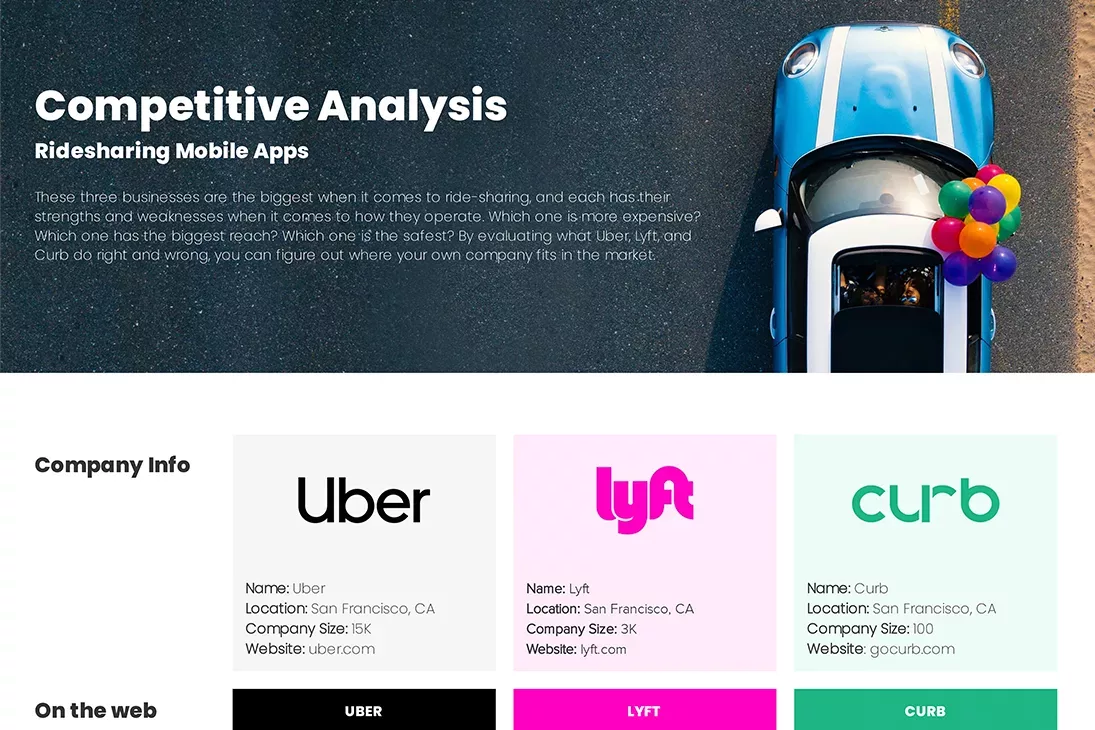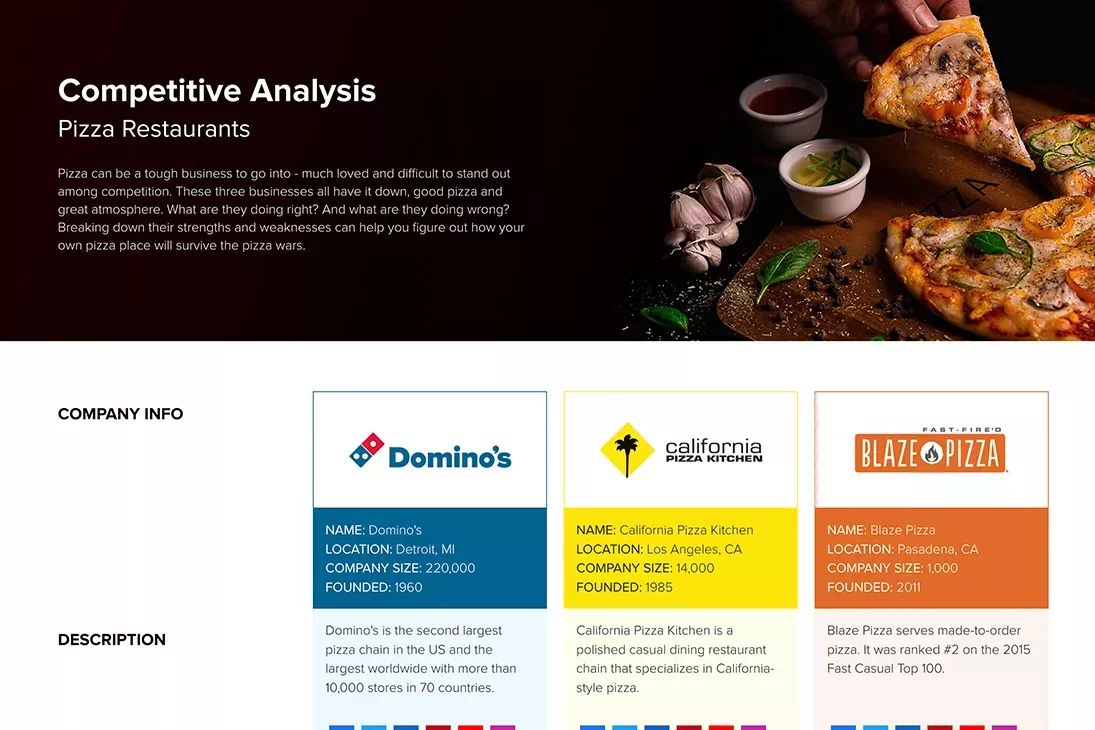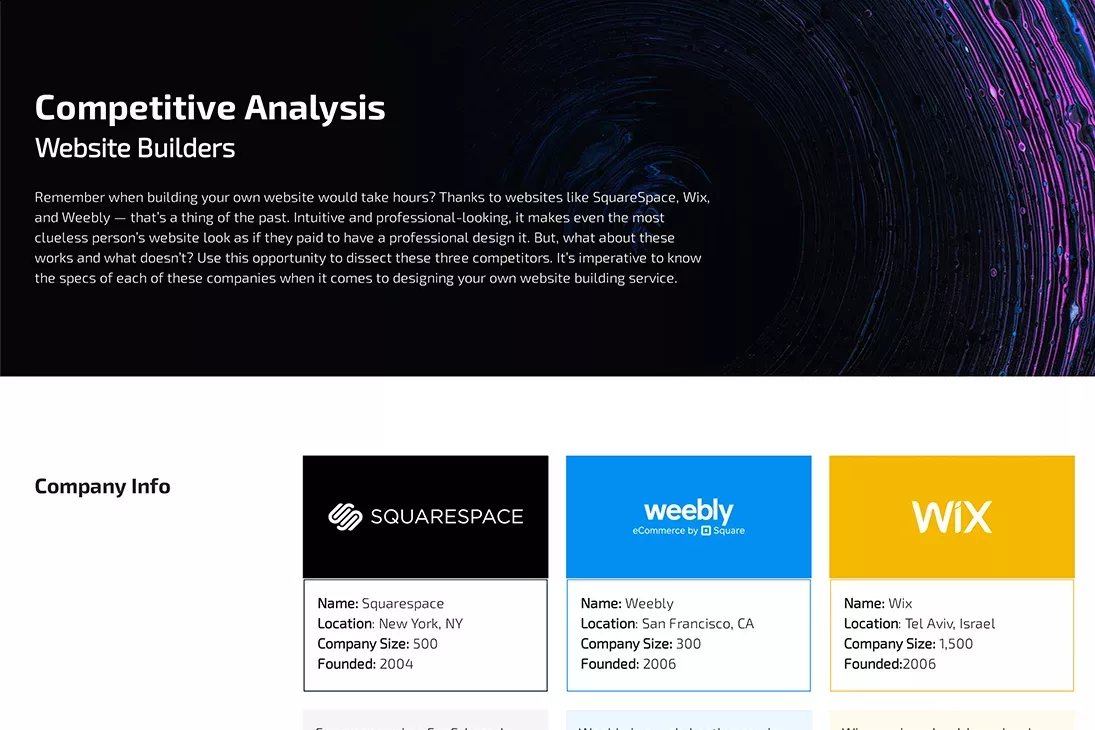

By diving into a competitive analysis, you can get a clear picture of your competitive landscape. It’s all about understanding what your competitors are doing right, where they’re missing the mark, and how you can fill those gaps. Our template makes it simple to track market trends, adjust your strategies, and make confident, data-backed decisions that help your brand stand out and grow.
Xtensio is your team space for beautiful living documents.
Create, manage and share business collateral, easily.
Join the 279,182 changemakers.



Getting to know your competitors is a game-changer for any business. When you understand your strengths and weaknesses compared to others in your field, you can find your unique place in the market, connect with customers more effectively, and win new business.
A Competitive Analysis helps you navigate your competitive landscape with clarity. It’s a practical framework for assessing your market position, identifying opportunities, and staying agile in a fast-changing environment.
Why does this matter? Imagine if your pricing was higher than the average in your market or compared to direct competitors. Without a clear view of where you stand, you might miss out on attracting new customers. A competitive analysis offers valuable insights that can shape a smarter marketing strategy and empower your sales team to turn more leads into customers.
By regularly diving into competitor research, you keep your finger on the pulse of market trends, giving your business the edge to adapt and thrive.
An effective competitor analysis helps you:
The first step in competitor research is identifying who the competition is. There are many ways to identify competitors, but the easiest is just Googling yourself – seriously! You may also use tools like Ahrefs to do a SERP analysis.
Start with a simple web search and relevant social media platforms for your business name, product ideas, and overarching business idea. From there you can explore the competition’s digital footprint as deep as you need to get a comprehensive view of the competitive landscape.
Search the competition’s website content and social media presence, news mentions, support threads, reviews, and online communities – to name a few! Also, look for competitive analysis examples relevant to your business niche. Use this free competitor analysis template to edit and share with your marketing team.
As you’re documenting your competitors track the basics:
When analyzing each competitor’s products or services, make sure you take a close look at the customer experience on their website, content marketing, social media, and digital footprint.
Writing a competitor matrix is the easy part. Once you’ve done a deep dive into the competitive landscape, you’re ready to create a side-by-side comparison of your business and the competition to help your team strategize better, plan business growth, content marketing, customer success, social media and other communication strategies to provide a clearer vision for the organization. Get started with Xtensio’s competitive analysis template.
Step #1: Describe your competitors
Introduce your competitor analysis with your target audience in mind and outline the general market landscape. You’ll list your three main competitors and their basic information: product, mission, location, company size, web presence, social media channels, and tagline.
Step #2 Analyze the competition’s strengths and weaknesses
It’s easy to notice what your competition is doing wrong, but what about the things they’re doing right? In order to compete, dissect all aspects of your competition by completing a SWOT analysis (Strengths, Weaknesses, Opportunities, and Threat Analysis) for each competitor. What are their customers happy about? What are they complaining about? Use this opportunity to dive into some qualitative competitor analysis.
Go online and collect YouTube, Facebook, and Twitter comments. Chat with your competitors’ customers if you can interact with them. You can use all of this information to find your own strengths, weaknesses, and your competitive advantage.
After summarizing your strengths and weaknesses, opportunities, and threats, it’s time to look at the bigger picture as to how this fits in with your marketing strategies. It’s time to figure out where every major competitor currently fits into the competitive landscape.
What’s each competitor’s position with respect to the market landscape criteria? Add new data pieces to compare across the board. Surely, this will help your audience understand the market and where your competitors stand concerning one another.
A competitive analysis will allow you to plan effective strategies to battle the competition and establish your own company in your target market. Remember, the competitive analysis is meant to help your team plan and strategize to stay ahead of the competition.
A report that communicates the findings of your competitive analysis will ensure stakeholders are on board and in the know. Add your team to collaborate or share a link so you can analyze your report together.
Check out Xtensio’s competitive analysis template how-to guide for more tips. Take advantage of other strategic frameworks to review the broader picture: